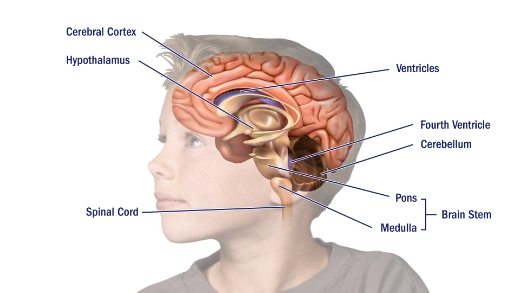
Diffuse intrinsic pontine glioma (DIPG) is a highly aggressive, difficult-to-treat brain tumor found in the area of the brainstem known as the pons. There are three parts that make up the brainstem – pons, midbrain, and medulla – which control critical functions such as breathing and heartbeat. Due to the location of the tumor in the brain and the speed at which the disease progresses, it is important to quickly develop an understanding of the disease and develop a plan for treatment, if desired. Pontine tumors are found in the pons of the brainstem.

The disease affects children almost exclusively, and the average age of diagnosis is typically between the ages of 5-10 years old; however, it is sometimes seen in children as young as 2 years old or in patients in adulthood. DIPG accounts for roughly 10-15% of all brain tumors in children.
Each year, approximately 300 children are diagnosed with DIPG in the U.S. alone. While the prognosis remains poor, new research is beginning to show some hope for the future.
For patients who undergo biopsy, diffuse midline glioma (DMG) is a newer pathology term used for gliomas that invade normal tissue in the “midline” of the brain. The midline includes multiple structures (the thalamus, the brainstem, and the spinal cord). Most DIPGs (70-90%) that are biopsied have the pathology diagnosis of DMG. Additionally, you can have a DMG outside of the brainstem that is not a DIPG. The prognosis of thalamic DMG is slightly better than DIPG, but this is a pretty subtle difference and not one that is fully understood by most clinicians. The main indicator for a more difficult prognosis in DMG is having a K27M mutation.